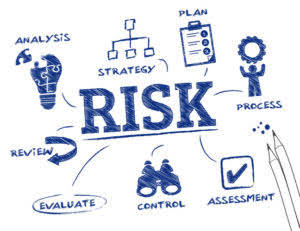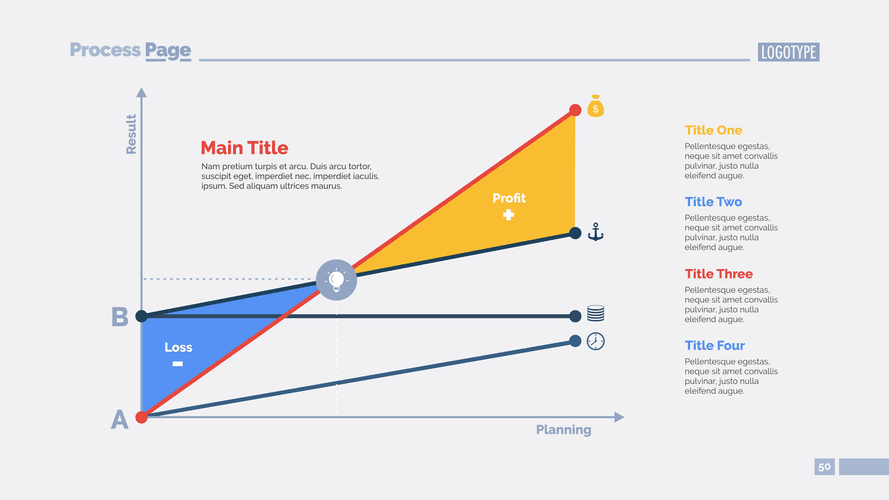
It would be inefficient to address insignificant risks in a high level of detail, and whether a risk is classified as a key risk or not is a matter of judgment for the auditor. In this lesson, Nick Palazzolo provides an overview of the audit risk formula, breaking down its components and audit risk formula explaining how it relates to the inherent risk, control risk, and detection risk. He emphasizes that while the formula is presented like an algebraic equation, it is not used as such in practice but serves a purpose in helping auditors understand the concept. Furthermore, detection risk can be reduced by the auditor through additional tests and procedures. Finally, the lesson tackles the idea of risk of material misstatement as an alternative representation of the formula.

How to perform Compliance Gap Analysis?

Acceptable audit risk is the concept that auditors need to obtain sufficient appropriate audit evidence to draw reasonable conclusions on which to base the audit opinion. The process of audit is considered to be one of the most cumbersome processes and tasks over the course of time. In this regard, it is important to consider the fact that there are numerous risks that are involved during the audit process. With the example above, we have the risk of material misstatement that the sale data being processed from the website to the accounting system may be incomplete and inaccurate.
Why is audit risk so important to auditors?
- Inherent risk comes from the size, nature and complexity of the client’s business transactions.
- It is concluded that risk decisions are part of the general political process, and cannot be isolated from this.
- In this approach, auditors analyze and assess the risks related to the client’s business, transactions and internal control system in place which could lead to misstatements in the financial statements.
- Detection risk is occurred because of the auditor part rather than the client part.
- Learn how governance, risk, and compliance strengthen organizations by improving decision-making, managing risks, and ensuring compliance.
If the client shows a high detection risk, the auditor will likely be able to detect any material errors. Professional scepticism is defined as an attitude that includes a questioning mind and a critical assessment of evidence. So, as we perform walkthroughs or other risk assessment procedures, we gain an understanding of the transaction cycle, but—more importantly—we gain an understanding of controls. We can assume that the inherent risk and control risk are relatively high, because the organisation operates in a highly regulated industry and there’s a low level of control because of the lack of financial expertise. If we assume that both inherent risk and control risk are at 60%, then we can figure out what detection risk must be set at to not assume more than 20% total audit risk.
Step 2: Calculate Acceptable Detection Risk
- This is the risk of a material misstatement in the financial statements, regardless of any controls.
- In order to reduce the complexity of minimizing audit risk, auditors utilize a suite of sophisticated tools designed to enhance the precision and reliability of their work.
- In this case, the overall risk of material misstatement for inventory will be reduced to some extent.
- Let’s consider a company called Charismatic Electronics Inc. that manufactures and sells electronic devices.
- The article will cover audit risk, audit risk categories, the audit risk model, its equation, and practical calculation examples.
- However, these risks can often be managed and minimised, especially with the help of finance automation software.
Basically, if the control is weak, there is a high chance that financial statements are materially misstated, and there is subsequently a high chance that auditors could not detect all kinds of those misstatements. This procedure could help the auditor to minimize audit risks that come from inherent risks. Inherent risk adjusting entries refers to the risk that could not be protected or detected by the entity’s internal control. This risk could happen due to the complexity of the client’s nature of business or transactions. Audit risk is the risk that auditors issue an incorrect audit opinion to the audited financial statements. For example, auditors issued an unqualified opinion to the audited financial statements even though the financial statements are materially misstated.
How to Prepare An Internal Audit Program? Tips and Guidance
If they assess that the internal control is effective, auditors usually tick the control risk as low and perform the test of controls in order to obtain sufficient appropriate audit evidence to support their assessment. The auditor then assesses the control risk, which is moderate due to the company’s implementation of effective internal controls and procedures, such as regular employee training, quality control checks, and documentation practices. Control risk or internal control risk is the risk that current internal control could not detect or fail to protect against significant errors or misstatements in financial statements. Those include sufficient time for the audit team to work on the significant areas or have a member who has a deep understanding of the business and accounting transactions of the auditing financial statements. In other words, the material misstatements of financial statements fail to identify or detect by auditors. These are the most common types and refer to the likelihood that an organization’s internal controls fail to detect or prevent non-compliance.
ESG Data Management: Best Tools & Strategies for 2025
Risk assessment is a crucial process in any business or project that helps identify potential threats and vulnerabilities. Calculating the risk assessment involves a systematic approach to evaluating the likelihood and impact of various risks. In this guide, we’ll delve into the key components of risk assessment and provide insights into the calculation formula. Among the three types of audit risk, inherent risk comes directly from the business nature itself. For example, if the business is in a high-risk area, the level of inherent risk is also high.
- On the other hand, if both inherent and control risks are high, auditors can only lower detection risk to have an acceptable audit risk.
- If audit risk is low, auditors can perform standard audit procedures but must ensure that significant risks have been covered.
- For example, control risk is high when the client does not perform bank reconciliation regularly.
- The model has based on the premise that all audits involve some level of risk and that auditors must take steps to manage that risk.
Audit Risk Model
If auditors believe that the client’s internal control can reduce the risk of material misstatement, they will assess the control risk as low and perform the test of controls to obtain evidence to support their assessment. However, there’s some level of detection risk involved with every audit due to its inherent limitations. This includes the fact that financial statements are created with a standard range of acceptable numerical values. The audit risk model provides a risk-based audit approach to assess the risks of material misstatement to determine the scope of audit procedures to perform.
Leveling Up Management of Audit Risk
Control risk involved in the audit also appears to be high since the company does not have proper oversight by a competent audit committee of financial aspects of the organization. The company also lacks an internal audit department which is a key control especially in a highly regulated environment. They only state that auditors should reduce the audit risk to an acceptably low level. Hence, auditors’ professional judgment which is based on their knowledge and experience is very important here.

Audit Risks: Definition, Types, Models and More
Audit Risk Model is a tool that is used by the auditors in order to understand the relationship between various risks that exist during the normal course of the audit process. This particular model suggests that the total risk that exists over the https://www.bookstime.com/blog/hoa-accounting course of the audit is a factor of three risks, inherent risk, control risk, as well as detection risk. This article shows you how to make more money and create higher quality audit documentation. Below you’ll see how to use risk assessment procedures to identify risks of material misstatement. You’ll also learn about the risk of material misstatement formula and how you can use it to plan your engagements.
